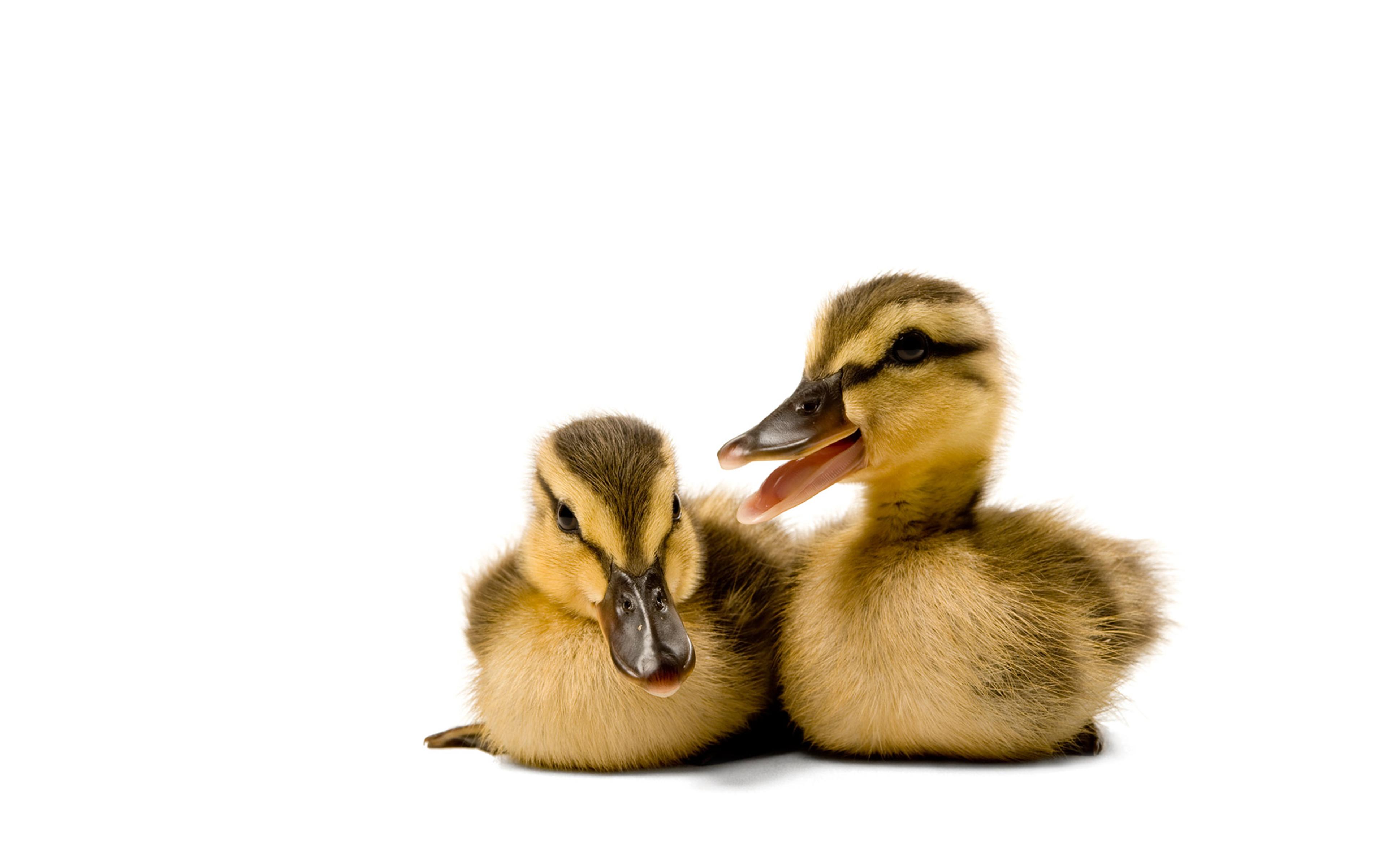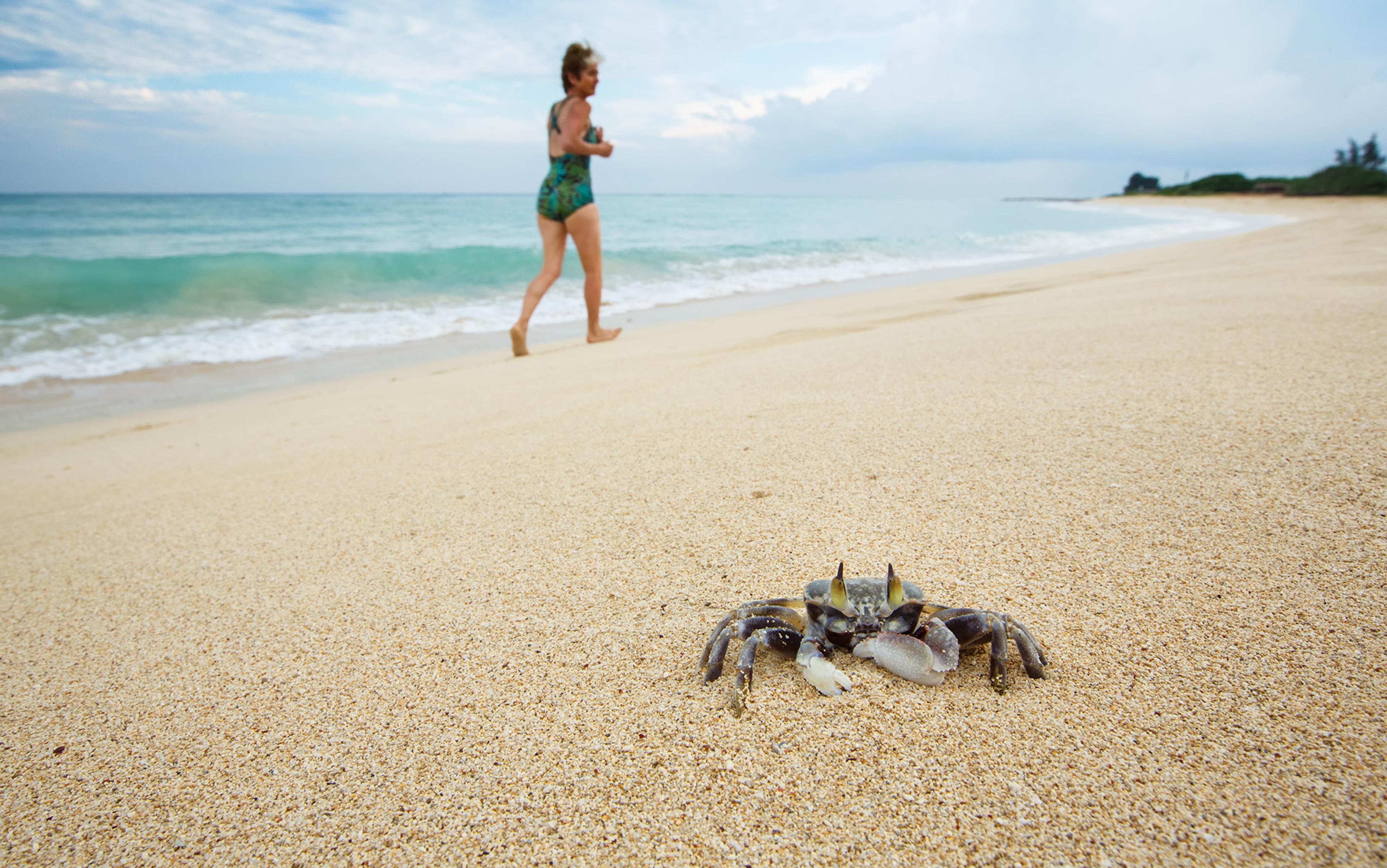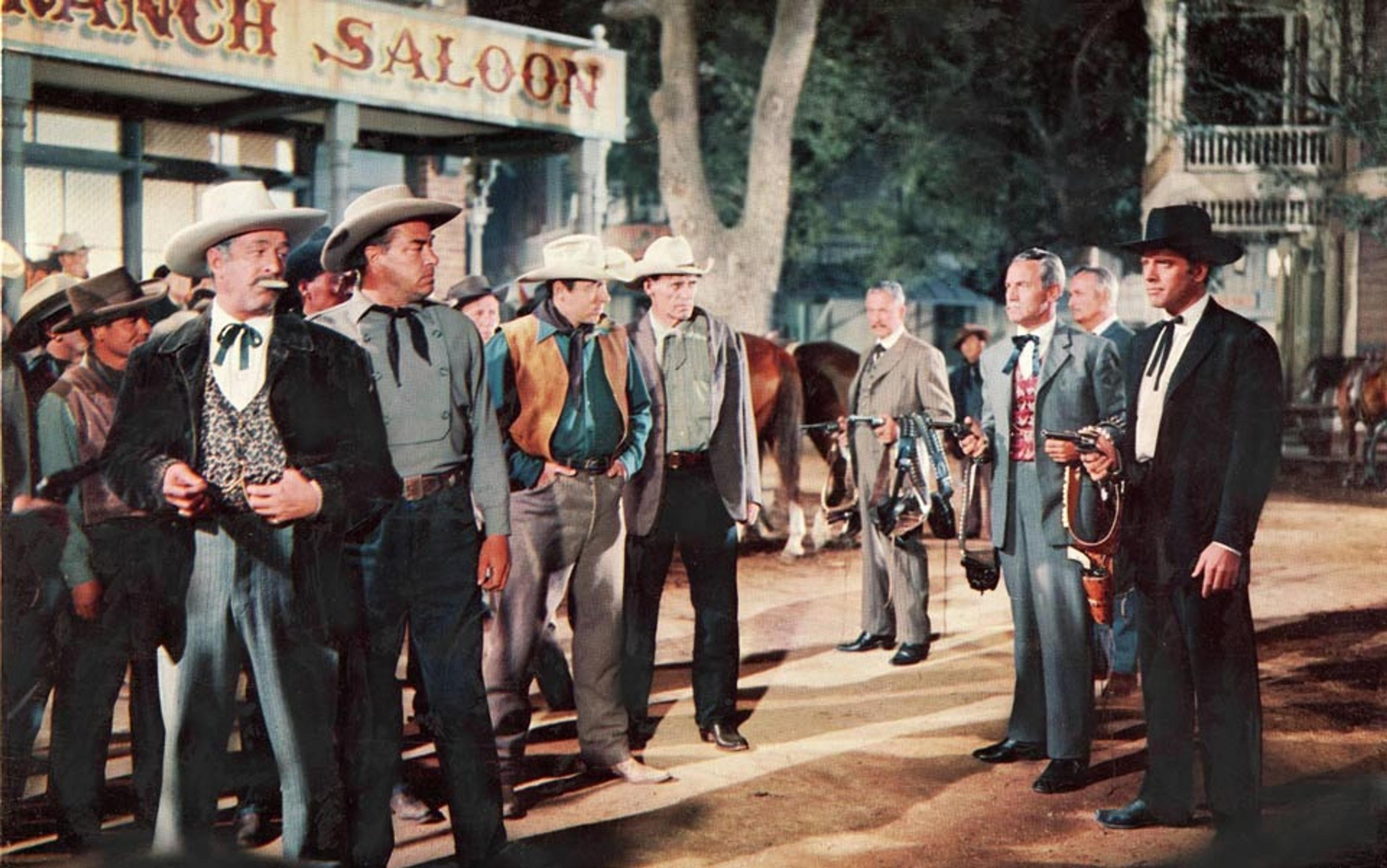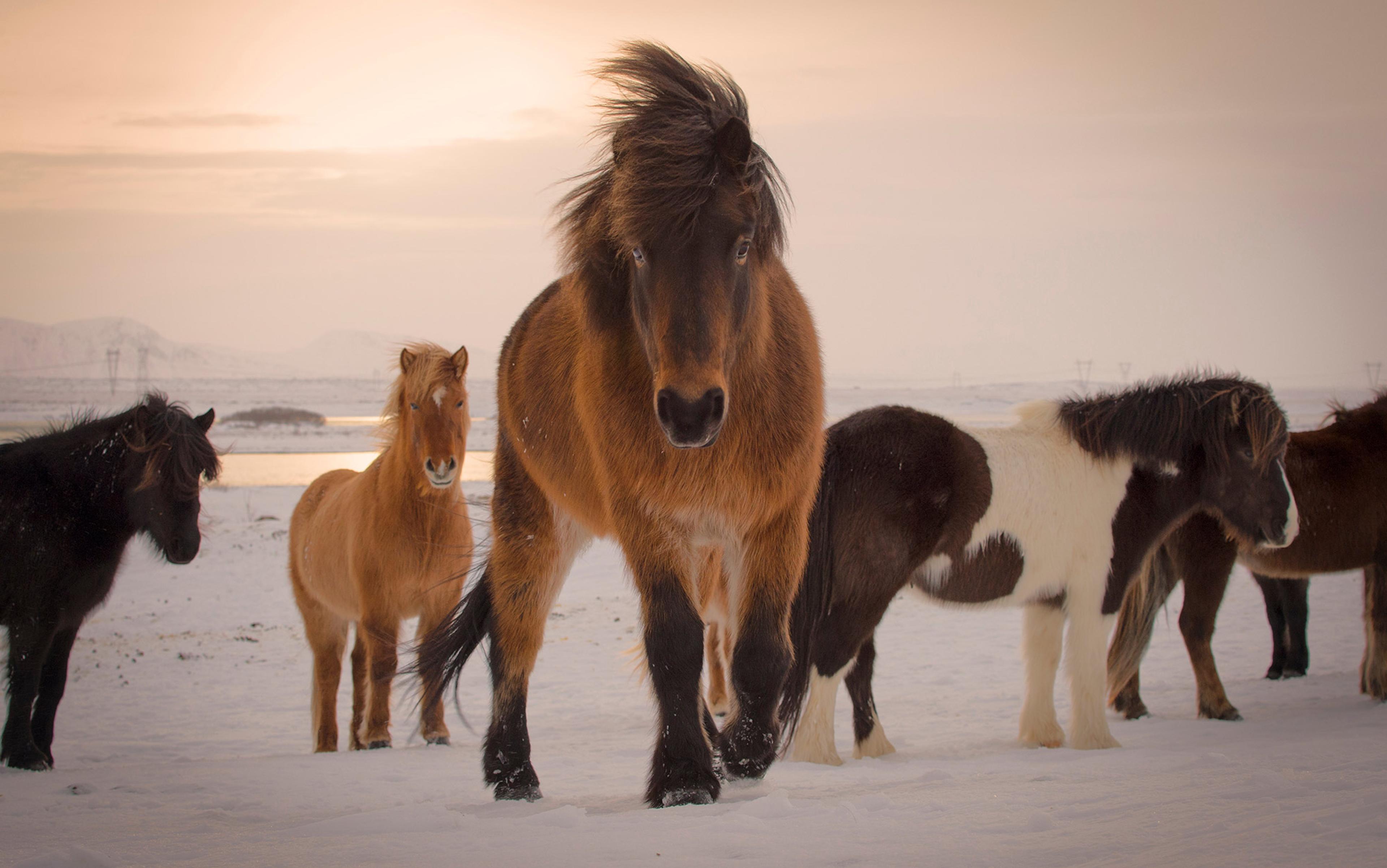I have recently decided to bring two small parrots into my home. They are celestial parrotlets, originally from Ecuador and Peru, and one of the smallest parrot species that can cohabit with humans. I call them Dandolo and Madeleine. They fit well into my apartment life in Oxford, despite the burgeoning beak-scars on my fingers, and they fill my weekends with rainforest twittering.
They are the first birds I have kept as pets – which is surprising, because my professional life is entirely concerned with birds. I am interested in how they learn, what they learn, and the behaviours that made them such a successful group of organisms. Birds are directly descended from dinosaurs, and have diversified into more than 10,000 species, far more than mammals, amphibians or reptiles. In the past, I have worked with crows and pigeons, and am currently focused on ducks.
Recently I’ve been investigating whether ducks can learn the concepts of ‘same’ and ‘different’. First, my colleagues and I trained ducklings to recognise, for example, two red spheres, via imprinting. This is the process by which young birds can learn to identify and follow a moving object, normally their mother. The shapes were attached to rotating booms, and the ducklings followed them around like a mother duck. Then we gave them a choice between two more pairs of shapes: two red pyramids, and a red cube and a red rectangular prism.
To everyone’s surprise, the ducklings could spot the difference. Both sets of shapes were new to them, but the identical pair had a familiar ‘sameness’, and so the ducklings were drawn to it. They showed an equivalent preference for matching colours – when they were primed on two green spheres, for example, they picked a blue pair over a mixed violet and orange pair – and for difference itself, preferring mismatched shapes or colours when they had imprinted on a non-identical pair. Previously, only members of the big-brain club of clever animals had been shown to be able to grasp such abstract ideas: parrots, chimps, other primates, and crows. (Though, with extensive training, pigeons can do it too. A funny pattern in animal behaviour seems to be that whatever difficult task you devise will eventually be done by pigeons, trained through thousands of trials.)
But ducklings, it turns out, are the emperors of all clickbait. ‘Ducklings are capable of abstract thought,’ screamed the internet. Now, to the extent that ‘thought’ means ‘brain activity’, or ‘the identification of abstract representations’, that’s not necessarily wrong. But the intuitive reaction suggested that, for any creature to be able solve such a problem, it must consciously infer the relationship between each pair and compare them; it must possess a version of a tiny homunculus (or, perhaps, anatunculus) in its cute little head, furrowing its brow in consideration of which pair is the ‘same’ and which is ‘different’.
Even for seasoned scientists, it’s hard not to assume that animals are thinking. There was one clever duckling in the experiment that noticed the rotating booms above the testing chamber that controlled the stimuli he was meant to be watching, and spent the rest of the trial intently staring at the mechanism, looking contemplative. We named him Plato.
But the other ducks in the experiment didn’t have names, and with good reason. We referred to them using numbers and symbols. With some exceptions, this is a standard practice. It helps researchers maintain an intellectual distance and avoid anthropomorphism, which is a cardinal sin in the study of animal behaviour. However, long-lived species used in repeated, cumulative behavioural experiments tend to be privileged with names: take Nim Chimpsky, the chimpanzee at the centre of a controversial, decades-long experiment in language acquisition, or the New Caledonian crows in a colony in Bavaria that I worked with a couple of years ago. In these instances, it is easier for a human researcher to keep mental track of animals’ histories when they are given names such as Jungle and Mango rather than S602 and D14.
The question of naming gets at the root of my confusion about my parrotlets. At home, feeding and training Dandolo and Madeleine, they are little people. They call to each other when I have one out of the cage for training because they miss each other; they chatter at me while I work because they are envious of my attention; they look at me with curiosity; they bite me because they are annoyed. In short, at home with my pets, I do what we all do: I anthropomorphise them to understand them. Were I not an animal behaviour researcher, I would hardly notice; but because I am, I constantly ask myself: why do I treat my pets like thinking, conscious companions, and the ducklings in my lab like feathered robots? The reluctance of my field to engage seriously with animal consciousness is, I believe, holding back our efforts to truly understand their behaviour.
Humans’ curiosity about other animals, and the seeming impossibility of knowing what it is like in their minds, if they have them, has persisted for the whole history of our species. Animist spirituality, the first human philosophy, posits open channels of communication between predator and prey. Yet many societies display a parallel tendency to brand animals as lesser beings, or even automatons, locked into the lower rungs of a great chain of being in which humans are at the apex. Medieval Europeans made animals stand trial for crimes and misdemeanours, but did not grant them souls or access to heaven. To this day, we worry about our dogs getting bored while we are at work, but think nothing of feeding them the exact same food every day of their lives. This ambivalence points to our own uncertainty and fear when confronted with the possibility of minds unlike our own.
After the 16th century, the scientific revolution gave humans new tools for examining other species through the lens of materialism. This is the idea that any explanation for behaviour must derive from the physical world. The scientific method demands testable hypotheses and, to be testable, they must concern only the physical world and its interactions. Anthropomorphism becomes a problem here because it inevitably calls upon the idea that animals are conscious, which is a hypothesis that cannot be tested.
For example, when my ducklings show that they can tell apart pairs of objects that are identical from pairs that are mismatched, we can say that the ducklings can discriminate abstract relationships, or learn abstract relationships, or compute or recognise or parse abstract relationships. All of these phrases are shorthand for the physical actions of the brain. Eyes gather light in patterns; that light stimulates neurons; those neurons stimulate other neurons; the brain performs a comparative calculation, in a complicated fashion we do not yet understand; and the duckling acts on the basis of these calculations, which is the behaviour we observe. What we cannot say is that the duckling thinks that the relationships are different, in the way a human might.
The reason for the resistance is because we have not yet answered the so-called ‘hard problem’ of consciousness. Why does the human brain produce a thoughtful awareness of our experience, instead of acting like a mindless computer driving a body? If we accept that all our choices and actions emerge from brain activity, then it is not hard to imagine all this commotion taking place without a fretful little mind in the cockpit, making us ‘feel’ it. What’s more, if such a driverless creature existed, with the same brain processes as you or I, its actions would be indiscernible from a conscious human’s – right down to asserting its own consciousness, a zombie fitting in with an enquiring world.
Hence the trouble with saying that a duckling ‘thinks’. From an empirical perspective, we cannot prove this. Whatever evolutionary history has led a duckling to do something will have tailored that behaviour to success, whether the action is consciously thought about or not. So to the external observer of behaviour, or even of neurons firing, there will be no difference.
Is there a way out? Let’s continue as strict materialists – assuming that there is no ethereal consciousness, and that the experiential feeling of ‘awakeness’ is an emergent property that comes from the activity of the brain. Now, each of us (assuming you are not a zombie) knows him or herself to be conscious. Quite reasonably, we do not assume ourselves to be a unique metaphysical marvel, the first and only conscious being in the Universe, a kind of Christ of Consciousness. The simpler explanation would be that, because each one of us is conscious and average, most other people are conscious and average. This line of reasoning does not mean there are no zombies – they could be the non-average ones – but all the information we have suggests to us that other humans are conscious.
In some senses, this is the scientific way of approaching the question. A guiding principle in science is parsimony: the notion that we should pick the least complex account that fits the evidence. Assuming that other humans are conscious is part of the simplest explanation for our own self-awareness. The scientific method is also an exercise in induction, drawing conclusions about a larger reality from the subset of data we have. Admittedly, our one data point – ‘I am conscious’ – is measly compared with a statistically rigorous sampling, but we have no other choice. Many strains of philosophy have problems with induction, and as a matter of pure reason, the regularity of past events does not necessarily guarantee the regularity of future ones. But science does seem to work regardless, and the fact it continues to do so is inductive support for the functionality, in the real world, of induction.
If this sounds plausible as an argument for consciousness in humans, why not apply the same reasoning to other animals? I find the parsimonious case for animal consciousness quite convincing. It goes something like this: humans are large-brained vertebrates that are good at solving problems creatively and can form abstract representations. They are conscious. Parrots, crows and many primates are large-brained vertebrates that are good at solving problems creatively and can form abstract representations. Since humans and these animals are composed of the same matter and evolved through the same general processes (and in the case of the primates, from the same lineage), it would be most parsimonious to assume that the emergent properties of their brains are similar. Including consciousness.
Many labs are now employing software to analyse animal behaviour on video not to reduce labour but to expunge flights of fancy
I am personally quite happy with this argument, and I suspect many researchers would agree – if not at the lab bench, then at least around the dinner table. Yet I continue to treat my ducklings like automata. One good reason for leaving sentimentality at home is that it’s simply not useful. One day, a loud lowing from a cow in the neighbouring farm building startled one of my ducklings. It turned its head, cowered and froze, ignoring the experimental apparatus. Now, I would be thrilled to disqualify his poor performance because I could tell that he was ‘scared’. On another occasion, I observed a duckling grow ‘confused’, turning its head in that oh-so-familiar confused-dog way when one of the stimuli pairs was just a little bit ‘less different’ than the training pair. I would love to be able to exclude the extended time it took the duckling to choose which set to follow. Given permission to read into their understandable expressions the perfect explanation for why my experiment wasn’t eliciting the right behaviours, I could find a solution for every quandary, and my conclusions would be iron-clad.
But that would be terrible science, because it loses all objectivity. The duckling might not have heard the cow, and the other one was probably just stretching. The only way to analyse every duckling in a consistent way is to be absolutely rigid in accounting for predetermined physical behaviours. As I am a scientist, I must banish all inventiveness to the experimental design phase, and keep the measurement clear of any fuzzy creativity.
In other words, in the pursuit of consistency, I must be conservative with respect to animals’ capabilities, and my own. In looking at the results, I must behave like a machine as much as I can in making and applying assumptions, and treat my animals, too, as close to machines as possible. This is why so many labs are now employing software to analyse animal behaviour on video: not to reduce labour but to expunge flights of fancy.
This might make lab life sound a bit sterile, but I’m happy to report that’s not the case. Analysing the video recordings is indeed an act of robotic precision, but running the experiments is almost always an entertaining disaster. Ducklings jump enclosures that were specifically built to an ‘un-jumpable’ height. Fully automated, humidity-controlled incubators flood. A duckling meticulously imprinted on a stimulus takes one look at me and declares me its ‘mother’ (a disaster for the data, but entertaining for me). Lab misadventure invariably makes the first weeks’ worth of data completely useless. This is universal to experimental science, but especially true of animal behaviour: things can go wrong for a chemist or physicist, but they don’t have arguably conscious little beings determined to make sure of it.
In the lab itself, I anthropomorphise in a casual and temporary way: ‘Naughty duckling! Why did you tangle your “mother’s” suspension wires? You knew I was testing you, didn’t you?’ Yet when I sit down with video and spreadsheet, any affection or empathy for my fluffy charges must go, so that science, untainted by fantasy, can be done.
So why do my pets think, and my lab animals do not? The answer, potentially unsatisfying, but actually hugely effective, is because that is what works.
I don’t mean this conclusion is somehow logically consistent; it isn’t. But this inconsistency comes not from a mistake in reasoning, but from the fact that ‘thought’ can mean so many different things. My lab ducklings mustn’t think – getting at the heart of what they do requires that I approach them from this perspective. I want to understand how their behaviours have evolved, and the adaptive purposes they serve. If they are thinking, regardless of the definition, it is merely part of the process that governs their behaviour, a process that will be evolutionarily constructed to produce the outcome that is beneficial to the duckling. Thinking about the ‘thinking’ only serves to cloud potential discoveries with unrevealing, bottomless questions. Ducks might or might not be conscious but, either way, it is beside the point in terms of arriving at an empirically justified answer.
When I train Dandolo, though, he must think. If I assume he is thinking and drawing inferences, I can predict what will annoy him and what will reassure him that I’m not going to hurt him but, rather, feed him. I can use anthropomorphism to draw the single-sample, ad hoc behavioural conclusions I need to work productively with a stubborn animal in a new environment. Humans are empathetic, and by endowing my little parrots with thought, I can more effectively empathise with their understanding of the situation that is moving into my flat and getting to know the giant that cohabits with them. Maybe they’re not thinking, but it’s damned effective to think they are.
We scientists could learn something from our experience with the animals in our homes. Sentimentality can skew the data, but it’s equally unhelpful to entirely shun the possibility that animals might ‘think’. A common scientific response to studies of ‘abstract representation’ or ‘thought’ is to argue down the cognitive explanations, and assert that the tested capabilities could be the result of lower-level processes in the brain. In the case of my concept-learning ducks, they might have made the discrimination by recognising visual features, rather than forming concepts. These respondents are doing their job: being skeptical of extraordinary claims and posing less unlikely explanations for new phenomena.
Muddling the distinction between consciousness and cognition forces us to play down the intellectual prowess of our companion species
Yet the antipathy to animal consciousness can crowd out equally valid accounts, simply because they demand higher cognition. It is absolutely true that we shouldn’t call on consciousness to explain how ducks solve the problem of detecting sameness and difference. But that proscription doesn’t mean the wholesale rejection of cognitive explanations in favour of sensory computations. Cognitive abilities such as abstract representation are not the same as consciousness. They just seem to cohabit in the one species – humans – to which we are comfortable ascribing consciousness. Cognition is a much easier nut to crack than consciousness, and seems to be reliably related to various physical properties (brain-to-body ratio, and neuron number and density, for example, among many others). There is no reason to shy away from ascribing cognitive abilities for fear of accidentally summoning the spectre of consciousness. The former offers plenty of richness without needing to be proxy for the latter, and an optimism about cognition invites experiments in unusual directions (such as unexpectedly discovering ‘abstract thought’ in ducklings).
If my ducklings do ‘think’, whatever that might mean, the best evidence for it is the fact that vertebrate brains are broadly more alike than they are different. That being the case, we should not assume either low-level or high-level cognition as the default when looking at such creatures. It is only a muddling of the distinction between consciousness and cognition, and researchers’ convention against assuming consciousness, that forces us to play down the intellectual prowess of our companion species. We would do well to break this habit.
To be clear, I have no crusade to blow open the doors of animal behaviour research and declare every animal a conscious mind. But nor should we be hubristic about the differences between humans and other vertebrates. That’s another sin in the biological sciences. As Ecclesiastes reminds us:
Therefore the death of man, and of beasts is one, and the condition of them both is equal: as man dieth, so they also die: all things breathe alike, and man hath nothing more than beast: all things are subject to vanity.






